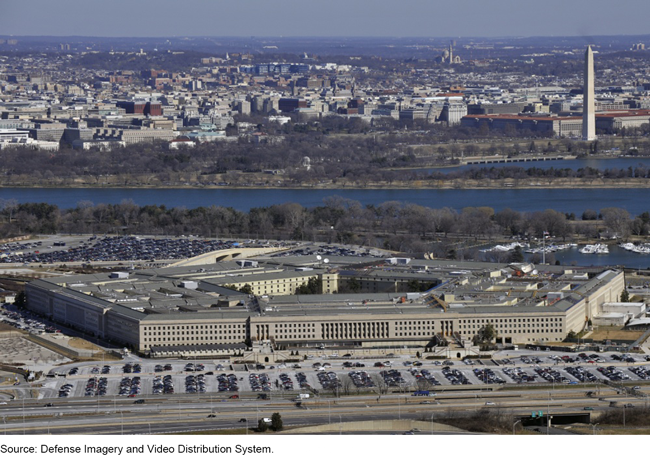Defense Budget: DOD Has Adopted Practices to Manage Within the Constraints of Continuing Resolutions
Fast Facts
The Department of Defense started 11 of the last 12 fiscal years under a continuing resolution, which provides temporary funding for federal agencies when Congress hasn't enacted regular appropriations by the start of the fiscal year.
DOD officials said continuing resolutions can delay their ability to pay for goods or services and can lead to repetitive administrative tasks or incremental planning. We found DOD has practices to minimize the effects of this kind of funding. For example, the military services may postpone contracts or nonessential training early in the year—when they're more likely to be under a continuing resolution.

Highlights
What GAO Found
GAO found that the Department of Defense (DOD) and the military services' obligations and acquisitions are limited during a Continuing Resolution (CR), but they have some practices in place to minimize the effects. Specifically, GAO found that for selected appropriations' accounts for fiscal years 2017 through 2020, the military services tended to obligate, (i.e., make a legal commitment to pay for goods or services), a lower percentage of their total annual obligations in the first quarter of the fiscal year—when DOD is most likely to be operating under a CR—as compared with the other quarters (see figure).
Military Services' Average Obligations by Quarter of Operation and Maintenance Appropriations, Fiscal Years 2017–2020

Note: Percentages may not add due to rounding. Although DOD officials reported acquisitions were constrained by CR provisions that restrict starting new programs and production rate increases, the programs GAO reviewed were able to avoid delays or cost increases during the fiscal years with CRs. The military services have instituted some practices to minimize the effects of CRs, including initiating service contract start dates after the first quarter of the fiscal year and postponing nonessential purchases and training to later in the fiscal year.
DOD officials stated both that the repetition and incremental planning required during a CR is not an effective or efficient way to operate, but that preparing for and operating under CRs have become routine in nature. GAO identified three activities directly related to preparing for and operating under CRs—developing legislative anomaly proposals (i.e., requests for authority beyond the standard CR provisions), creating spending plans for various CR scenarios, and adjusting contracts to reflect CR funding availability.
DOD civilian hiring generally slowed during CRs. GAO's analysis of DOD civilian hiring data from fiscal year 2017 through 2020 found that, on average, fewer civilian personnel were hired per day during CRs than during non-CR periods. For fiscal years 2017, 2018, and 2020, DOD hired on average about 200 civilians per day during CR periods as compared with about 250 people per day during non-CR periods.
Why GAO Did This Study
For 11 of the past 12 fiscal years, DOD has operated under a CR for some part of the fiscal year. CRs provide funding for agencies to continue operating when Congress has not enacted its regular appropriation acts before the beginning of the new fiscal year. From fiscal years 2010 through 2021—with the exception of fiscal year 2019 during which there was no CR—DOD has operated under CRs ranging from 76 to 216 days. DOD officials have stated publicly that delays in knowing when and how much funding will ultimately be available for the fiscal year hampers the military services' ability to accomplish key mission requirements and carry out management functions.
The conference report accompanying the National Defense Authorization Act of Fiscal Year 2020 included a provision for GAO to review the effects of CRs on DOD. This report examines, among other things, (1) the effects of constraints on the military services' spending and acquisitions during CRs, and what practices they use to minimize these effects; (2) how DOD personnel prepare for and operate under CRs; and (3) DOD's hiring of civilian personnel during CRs.
GAO reviewed DOD's CRs, the military services' quarterly obligation reports, and DOD civilian personnel hiring data for fiscal years 2017 through 2020; obtained information from DOD and military service financial management officials; and interviewed officials from a nongeneralizable sample of major defense acquisition programs and other defense organizations.
For more information, contact Elizabeth A. Field at (202) 512-2775 or FieldE1@gao.gov.
